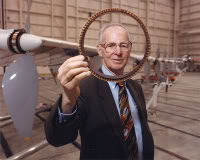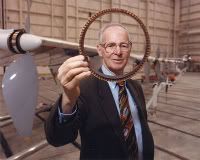For Electric Vehicle Chargers, Look to AeroVironment


For readers who may not have taken time to consider the subject, here are a few basic concepts:
Chargers: The motto of EV advocacy group Plug-In America (which I like to tell people all the time) is “Unplug your toaster and plug in your car.” It’s almost that simple, but not quite. Though most people park their cars at night within close proximity of electrical power, they need a simple device that safely and conveniently connects their car to their house’s or apartment’s wiring. This charger ensures your batteries are getting the right amount of current for the right period of time.
Basic physics: Energy = voltage X current X time. At 110 volts at a given current, you need twice as much time to deliver a full battery charge as you do at 220 volts.
Level 1, 2 and 3 chargers: Simply, Level 1 chargers work off 110 volts and perhaps 15 amperes, delivering roughly the same amount of power as a space heater. At this power level, 8 – 30 hours is required to deliver a full charge. Level 2 might be 220 volts and 30 amps, and would get the same job done in about one-quarter of the time. Level 3 chargers at quick-charging stations (not something you would have at home) might be 480 volts and 400 amps, and would charge a car in just a matter of minutes.
Here’s a quick transcript of the talk:
Craig Shields: If you would, please tell me about the vision. Where is AV going with this?
Kristen Helsel: We enable the practical adoption of EVs. We tailor the product to the needs of different types of customers. We started out with standard Level 2 chargers, but we quickly realized that different types of people would want various types and numbers of bells and whistles. Someone may want a charger that communicates information in real-time to the owner and to the utility; others may just want to charge their car.
CS: I can see where that level of diversity would be an advantage, but it must take some serious work to manage the development and distribution of all those products.
KH: Yes, but this is a true paradigm shift, and our goal is to make it as easy as possible.
CS: What would you say would be a good example of that?
KH: Well, here’s a simple one: make it obvious when the car is charging and when it isn’t. When you fuel your car today, you know when the gas is flowing. The new experience should mirror the old experience in every way possible. And the product should look great, and it should be a joy to use – like the iPhone. People should love it. Charging should be a positive and re-enforcing experience.
CS: Gosh, this really does sound like an important role you’re playing.
KH: I think so, too. The world has reached a critical point with respect to energy independence, and this time we introduce EVs, it’s going to work. Sure the OEMs have to build the cars. But consumers have to want them. That’s where we come in.
CS: Thanks so much for your time, Kristen.
